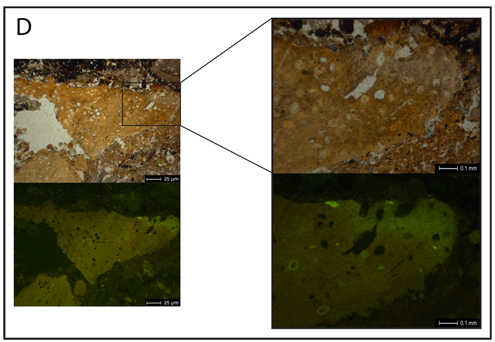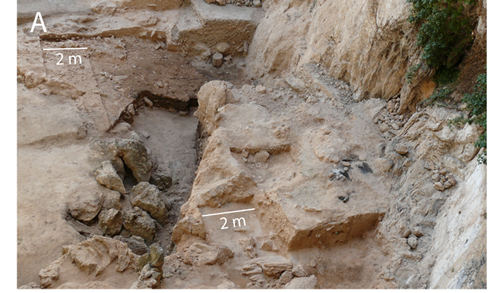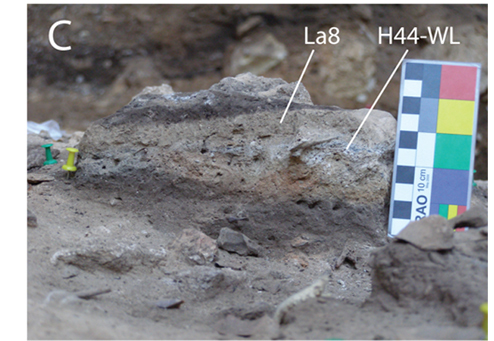The Diet of Spanish Neanderthals – Plenty of Vegetables
Amongst the many theories put forward for the extinction of our closest relative the Neanderthal (Homo neanderthalensis), is one hypothesis focused on their diet. The theory suggests that as these humans had a much more meat-based diet than our ancestors, once their prey animals went into terminal decline, the Neanderthals themselves were doomed. The Neanderthals over reliance on big game to hunt has been put forward as one of the reasons why they became extinct, whereas, we, more adaptable humans (H. sapiens) did not.
Neanderthals
A number of studies have been conducted. Micro-fossils extracted from the teeth and jaws of Neanderthals have indicated that in some communities the diet was much more varied with evidence of a number of wild plant species being consumed or even used as medicines. In addition, analysis of cave floor sediments has supported this idea that the Neanderthals, at least in some parts of the world, had a much more varied diet.
To read an article from 2010 on the diet of Neanderthals: Neanderthals Ate Their Greens.
Now a new study, conducted by Spanish scientists and involving sophisticated gas chromatography-mass spectrometry, undertaken at the Massachusetts Institute of Technology supports the theory that for Neanderthals living in Spain, 50,000 years ago, plants contributed significantly to their food intake.
Research into omnivorous Neanderthals involved a study of faecal matter (poo) found at a Middle Palaeolithic Neanderthal camp site, located at El Salt, close to Alicante on Spain’s Mediterranean coast.
The El Salt Site During Excavation
Picture credit: Ms Ainara Sistiaga (University of La Laguna, Tenerife)
Lead author of this scatologically based study, Ms Ainara Sistiaga, a PhD student at the University of La Laguna stated:
“Poo is the perfect evidence, because you’re sure it was consumed.”
Ms Sistiaga and her co-workers collected a number of samples from a layer of sediment associated with camp fires at the El Salt dig site. These samples were taken to the Massachusetts Institute of Technology and analysed at the molecular level using the technique of gas chromatography-mass spectrometry. Faecal matter studied provided evidence of plant material intake as well as meat. The fossilised faecal material was identified as several of the samples had high concentrations of an ester called coprostanol, presence of this ester is diagnostic of human faeces.
The Neanderthal faecal matter represents the oldest hominin faeces known to science. The 50,000 year old poo came from the very top layer of an area which had evidence of camp fires. Although the faecal remains showed signs of having been slightly burnt, the research team are confident that the deposits were left behind after the fire was extinguished. Perhaps, this “dumping ground” was used later as a camp fire site, or perhaps the “deposit” took place near to the periphery of another camp fire.
A Photograph Identifying the Position of the Faecal Matter
Picture credit: Ms Ainara Sistiaga (University of La Laguna, Tenerife)
The picture above shows the faecal layer surrounded by darker layers which indicate the ash residues from camp fires. Sediment analysis also led to the identification of more substantial amounts of Neanderthal poo. The fossil poo (coprolite) had a high phosphate content, typical of human excrement. When studied under blue light, small slices of the coprolite glowed, indicating the presence of phosphates in the sample.
Images of the Faecal Matter Used in the Study

Microphotographs of a slightly burned coprolite of putative human origin identified in El Salt (Neanderthal camp site).
Picture credit: Ms Ainara Sistiaga (University of La Laguna, Tenerife)
The two images (top) show the samples when viewed under standard lighting conditions. These pictures show the pale brown colour of the coprolite as well as the common presence of inclusions, which could represent the eggs of parasitic nematodes. When viewed under blue light fluorescence, the phosphate glows. The images on the right are highly magnified sections. Analysis of soil sediments from 5 locations across the dig site, each one representing different ages of occupation by Neanderthals suggest that meat was extremely important in the diet of the Neanderthals, but the faecal evidence also indicates that a substantial quantity of plant matter was also consumed.
This study suggests that the Neanderthal extinction theory based on a reliance on game to hunt may be an oversimplification. Neanderthals probably had a varied diet taking advantage of seasonal food resources and exploiting them as efficiently as Homo sapiens.
Intriguingly, many of the earlier Neanderthal dietary studies were based on Neanderthal remains found at northern latitudes and at different stratigraphic levels. The Neanderthals thrived in Europe for over 300,000 years, it is very likely that across their extensive range, dietary differences did occur. Recently, studies of stone tools have suggested distinct technologies as being the basis for different Neanderthal cultures. In addition, just as we see today in nomadic human populations, it is likely that northerly populations relied more heavily on meat in the diet than southerly populations which were able to exploit the flora of more temperate, milder climates.







Leave A Comment